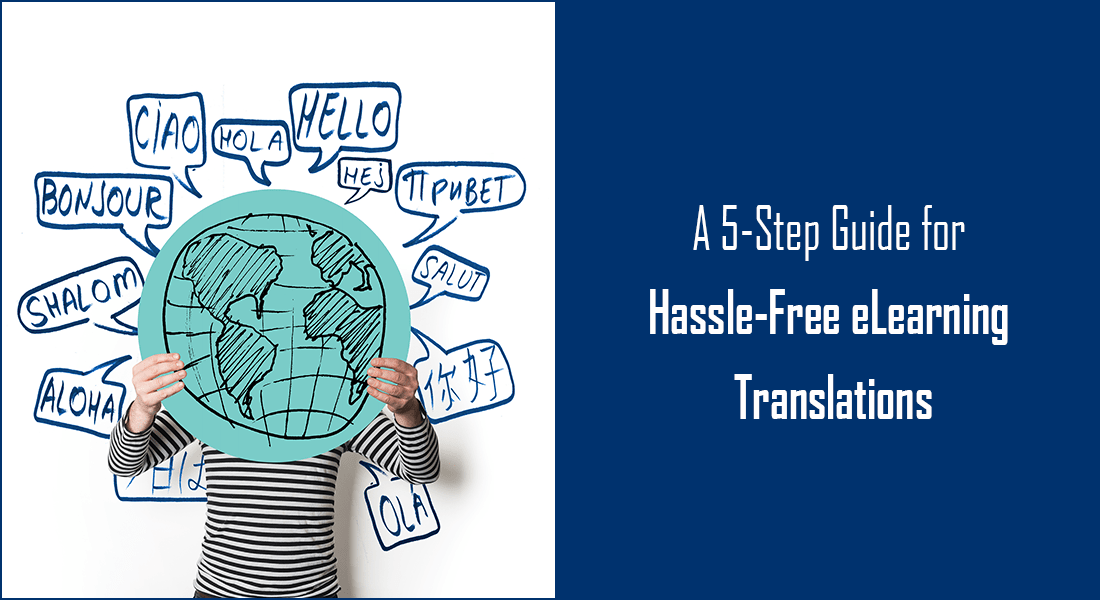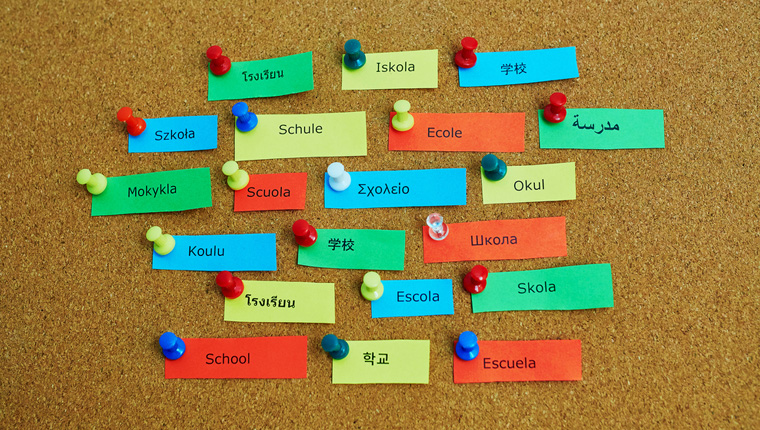A 5-Step Guide for Implementing eLearning Translations You Shouldn’t Ignore

“Por fin he conseguido un trabajo!” Didn’t get it? Me neither. Let’s translate this and see what the text says. It says “I finally got a job!” in Spanish. Now everyone can’t go and google translate everything they don’t understand. Hence, there is a need to maintain a single piece of content in different languages to avoid this unnecessary hassle of self-translation. Corporate training is a prominent example of an industry that requires almost all of its content to be translated into multiple languages. This is due to the fact that a company can have their work offices in several places across the globe and for the training to be impactful, the courses must be delivered in the native language of the employees. This facilitates an overall immersive learning experience. Translating eLearning courses objectively improvises the globalization of information and subjectively promotes the localization of the respective content.
Now, translation is not just a literal conversion of content from one language to another, it’s much more than that. While translating an eLearning course into multiple languages, an appropriate consideration for the culture and traditions of the respective community is taken into consideration. To match the requirements of course globalization, certain strategical steps are followed to make sure the translation process gives out the best results possible. 5 effective steps to implement eLearning translations are mentioned below.
Planning to Take Your eLearning Course Global?
Get to know 5 necessary steps to effectively translate an eLearning course:
- Content Selection
- Instructional Design Strategy
- Integration of Audio and Visuals
- Finalized Development Process
- Outsourcing Strategy
Read on to dive deep into each of these steps.
1. Content Selection
Logically, the entire course is the content in general, but we aren’t talking about content in that sense. Here, the content refers to the text within the course and the corresponding tonality of that text. Keeping the original course content translation-friendly will eventually make the translated copies crispier and more engaging. Things such as region-specific phrases and religion-sensitive references have to be avoided to ensure the sentiments of the global audience are not bothered.
2. Instructional Design Strategy
The fundamental structure of a course or in simple words, the method of presenting the information to learners is called the instructional design strategy in eLearning terms. An instructional strategy is crucial due to the fact that global learners learn independently or under minimum guidance. If learners tend to face issues while accessing or understanding the course, the whole point of a translation turns vague. Learners from each region have a different approach to their course’s layout. For example, in an eLearning course that includes complex and advanced interactives and a lot of technical references, it becomes hard to translate such courses while not losing their relevance.
Have more questions in mind regarding eLearning translations? We have your answers!
3. Integration of Audio and Visuals
An audio strategy is a tricky approach within the translation procedure and can be applied in several ways that would eventually reduce the budget and time associated with the development of the course. Using AI speech tools can be one of the options but that won’t be viable for relatively less popular languages. It’s considered a productive practice to include more text and less audio because text interacts more directly with the learners than the audio.
Visuals are as important as the relative text within a course. The cultural and traditional implications of a global audience need to be considered with the same intensity as text content. Using vector images and humanoids is a good practice as they provide the most accepted approach toward neutrality. Keep in mind not to embed text over the original images to ease out the translation process. There is another relevant approach where images are changed with respect to the sentiments of the specific community the translated course is intended towards, but this approach is much more time-consuming as it requires extra personalized efforts.
4. Development Process
Just like the instructional design, the development process opted for the original course will significantly impact the engagement and relevance of translated courses. A development strategy requires the most effort and time because it lays the foundation for the entire course. All the other strategies are merged accordingly to complete the translation procedure. Some major inclusions in the development process are:-
- Designing the course
- Finalizing the languages, the course has to be translated into
- Understanding the requirements of the learners globally
- Deciding the method of delivery in each region
- Choosing the appropriate authoring tool
If the development process is casually left out with loopholes, the whole translation process can be damaged and turned relatively impactless with a risk of getting overlooked and scrapped.
5. Outsourcing
When you are all set with the collective development processes, the outsourcing strategy is the final and the most crucial hurdle to jump across. Your actual translation process starts now, here you have to translate your course from its original language to the other requested languages. Translation procedures shouldn’t be executed in-house due to certain limitations such as:
- Technical limitations – In-house translators might lack the technical knowledge of certain complex courses.
- Authenticity limitations – In-house translation might cause the content to lose its authenticity on a global scale due to an unmatched tonality and misunderstanding of local culture, thus hampering the overall engagement of the course.
- Time limitations – The development of the main course is already a time-consuming task, implementing the translations in-house as well might consume a lot of time making it even harder to meet the deadlines.
Thus, an outsourcing strategy is important. To start with the outsourcing practices, find a reliable translation vendor and arrange the necessary and relevant files in their correct order. Neat and Clean source files will eventually ease the translation process to a great extent.
To Conclude It All!
While carrying out the translation processes and the related strategies, there can be certain tools that will help you throughout the process. Apart from the tools, there will always be black hat practices that might deviate the developers from an authentic process due to their excessive short-term solutions that come with relatively higher risk. Staying away from such fishy services and providing a full-fletched authentic translated course for a global audience will always impact you positively.
People are often ignorant when it comes to realizing the back-end processes involved in the execution of a relatively simpler task. Yes, I am talking about the pseudo-tech savvies who think everything can be automated and served to the learners as relevant content. That’s definitely not the case, the creation of an original course before getting it translated is always the best practice to approach and should never be avoided.
Development of an original course and getting its translation sorted is an overall creative task and our free eBook can help you with amazing eLearning translation strategies for global training while answering any of your existing questions.





![Effective Translation of E-learning Courses – 4 Tips [Infographic]](https://blog.commlabindia.com/hubfs/Imported_Blog_Media/translation-of-elearning-courses-4-tips-infographic1.png)